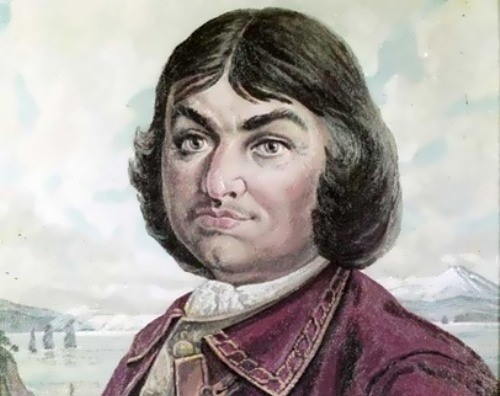He found Alaska, the Russians sold it for money: who is Vitus Bering?
Danish explorer. He found the Bering Strait, which separates the Asian and American continents, and discovered Alaska, leading to years of Russian domination in this region.

(1681-1741) Vitus Jonassen Bering (or Behring) was born in Horsens in 1681. He was the son of a poor family with many children; He started to earn his living from the sea at a young age. Returning from a voyage to the East Indies in 1703, he joined the navy of the Russian Tsar Peter the Great, who fought alongside Denmark, Poland, and Saxony against Sweden. During this Northern War, which lasted until 1721, he attracted attention as a master sailor, especially in the battles in the Baltic Sea and the Black Sea, and was commissioned by the Tsar to lead the expedition to the Kamchatka Peninsula. He died of scurvy on December 19, 1741, on Avatcha Island, where he took refuge on his last expedition. The island was also named after him.
Vitus Jonassen Bering (1681 - 1741), also called Ivan Ivanovich Bering (Russian name) was a Danish seafarer and explorer. He went into the service of the Russian navy in 1704. He was commissioned a second lieutenant. During the Great Northern War, he distinguished himself and was promoted to the rank of commander.
Learning from the first Russian travelers that there were rich lands beyond Siberia, Tsar Peter the Great commissioned a team led by Bering in 1724 to investigate whether there was a land connection between Asia and the Americas. If these two continents were adjacent to each other, the north of America would be easily reached by land. Departing from Petersburg (present-day Leningrad) on February 5, 1725, Bering crossed Siberia by land in nineteen months, arriving at the port of Okhotsk on the Pacific coast on September 30, 1726. Part of the ships was built there, and the crew sailed to the northern coast of Kamchatka. While the construction of Bering's ship "Gabriel" was underway at the northern tip of the peninsula, he also produced the first map of Kamchatka. Ultimately, the crew sailed on July 9, 1728, sailing north, circumnavigating the coast of Kamchatka, and reaching the Arctic Ocean via the Bering Strait in August. Returning to Petersburg in March 1730, Bering was unable to see the Alaskan coast due to bad weather but learned that the two lands were not connected and that there was a strait between them.
However, the fact that he did not bring any information about the rich lands mentioned by the travelers did not please Empress Anna Ivanovna, who was on the throne at the time. Bering, who was planning a voyage thereupon, departed from Petersburg in February 1733 and arrived at Okhotsk by land again, and after completing all his preparations, he sailed from Kamchatka to America in June 1741. Turning his course to the northeast, he saw Alaska on July 16, 1741, and anchored at Kayak Island on July 20. But most of his men were sick and depressed. For this reason, the team, which started the return journey from the direction of the Aleutian Islands, could not progress much due to bad weather conditions and a lack of maps. Bering, who also caught scurvy himself, decided to spend the winter on one of the islands, but he could not get rid of the disease and died. Only 45 of the 77-person crew were able to return in 1742.
The Russian navigator Semyon Dezhnev first passed through the Bering Strait, which separates the two continents, in 164S, but his reports were not taken into account until 1736. For this reason, the strait and the coastal part of the Pacific Ocean that penetrates toward the territory of Russia and Alaska was named after Bering. Shortly after the discovery of Alaska, the Russians established their first settlements there and monopolized the fur trade, and dominated the region for many years.
